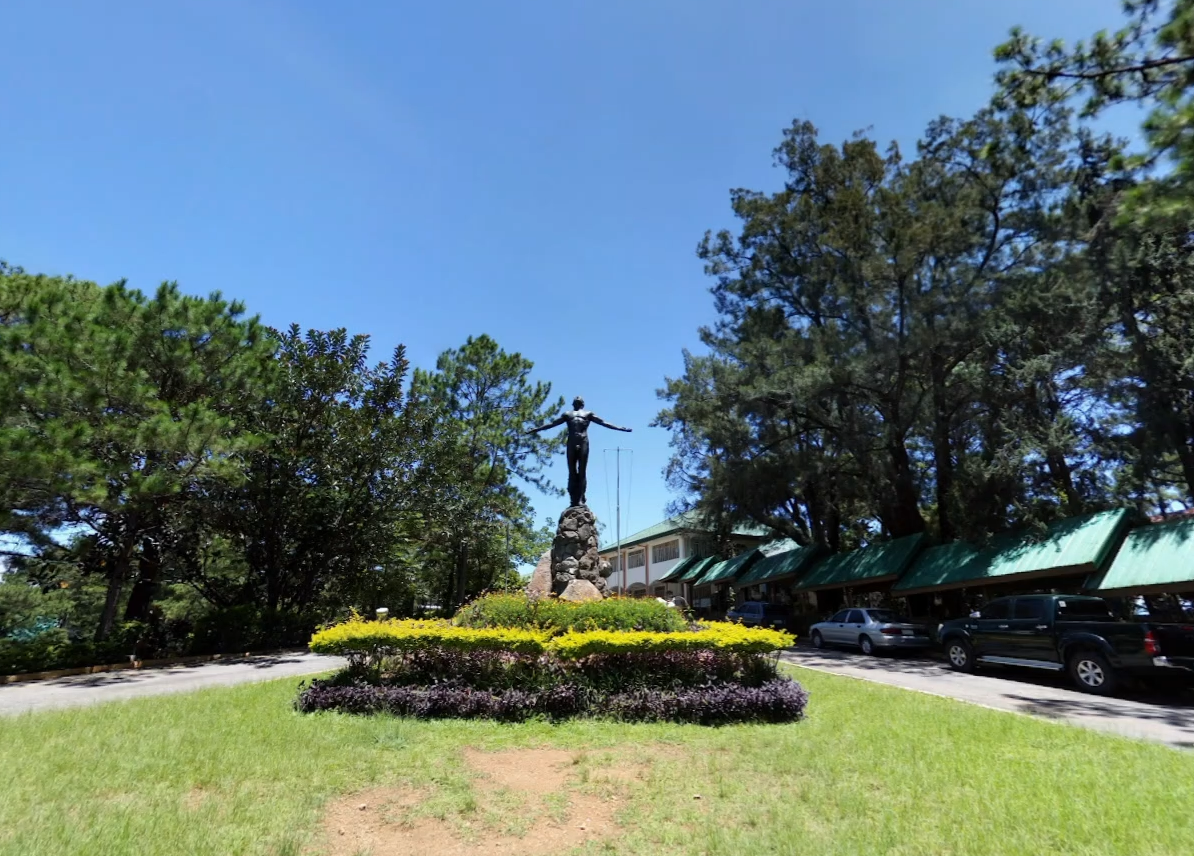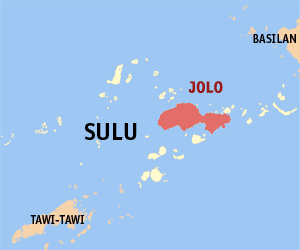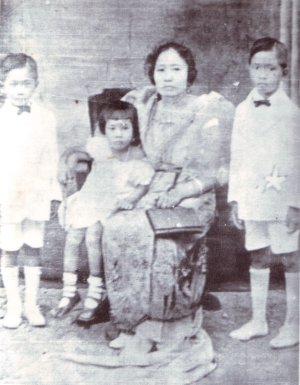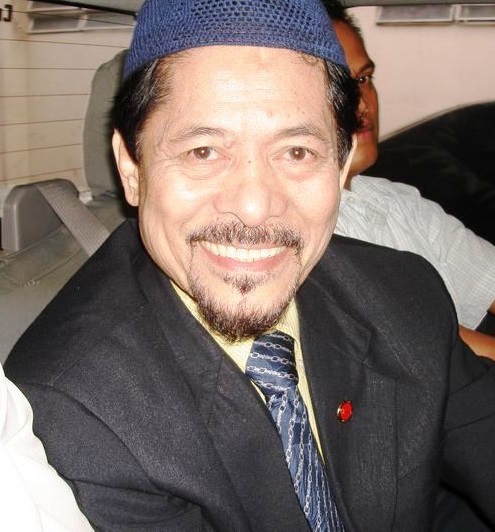|
Battle Of Jolo (1974)
The Battle of Jolo, also referred to as the Burning of Jolo or the Siege of Jolo, was a military confrontation between the Moro National Liberation Front (MNLF) and the government of the Philippines in February 1974 in the municipality of Jolo, in the southern Philippines. It is considered one of the key early incidents of the Moro insurgency in the Philippines, and led numerous Moro leaders to resist martial law under Ferdinand Marcos. MNLF forces initially managed to control the municipality, except the airport and an adjacent military camp. Government forces led by the 14th Infantry Battalion managed to regain control of the town. The United States military also reportedly participated according to both government and MNLF officials. Narrative from the US Embassy According to a 1974 United States Embassy memo that was declassified by the United States Department of State in 2005, the following events occurred prior to, during, and after the siege:1. Most serious ... [...More Info...] [...Related Items...] OR: [Wikipedia] [Google] [Baidu] |
Moro Conflict
The Moro conflict is an insurgency in the Mindanao region of the Philippines, which has involved multiple armed groups, and has been ongoing since March 1968. Peace deals have been signed between the Philippine government and two major armed groups, the Moro National Liberation Front (MNLF) and the Moro Islamic Liberation Front (MILF), but other smaller armed groups continue to exist. The root cause of the Moro conflict is associated in a long history of resistance by the Bangsamoro people against foreign rule, including the American annexation of the Philippines in 1898; Moro resistance against the Philippine government has persisted ever since. During the administration of Philippine dictator Ferdinand Marcos, political tensions and open hostilities developed between the Philippine government and Moro Muslim rebel groups. The Moro insurgency was triggered by the Jabidah massacre on March 18, 1968, during which 60 Filipino Muslim commandos on a planned operation to re ... [...More Info...] [...Related Items...] OR: [Wikipedia] [Google] [Baidu] |
United States Armed Forces
The United States Armed Forces are the military forces of the United States. The armed forces consists of six service branches: the Army, Marine Corps, Navy, Air Force, Space Force, and Coast Guard. The president of the United States is the commander-in-chief of the armed forces and forms military policy with the Department of Defense (DoD) and Department of Homeland Security (DHS), both federal executive departments, acting as the principal organs by which military policy is carried out. All six armed services are among the eight uniformed services of the United States. From their inception during the American Revolutionary War, the U.S. Armed Forces have played a decisive role in the history of the United States. They helped forge a sense of national unity and identity through victories in the First Barbary War and the Second Barbary War. They played a critical role in the American Civil War, keeping the Confederacy from seceding from the republic and preserving the uni ... [...More Info...] [...Related Items...] OR: [Wikipedia] [Google] [Baidu] |
University Of The Philippines
The University of the Philippines (UP; fil, Pamantasan ng Pilipinas Unibersidad ng Pilipinas) is a state university system in the Philippines. It is the country's national university, as mandated by Republic Act No. 9500 (UP Charter of 2008), giving it institutional autonomy. Originally founded by the American colonial government on June 18, 1908, it was established through the ratification of Act No. 1870 of the 1st Philippine Legislature to serve as an "advanced instruction in literature, philosophy, the sciences and arts, and to give professional and technical training" to eligible students regardless of "age, sex, nationality, religious belief and political affiliation." The University of the Philippines system has 8 constituent universities (CUs): UP Diliman, which serves as the system's flagship university, UP Los Baños, UP Manila, UP Visayas, UP Open University, UP Mindanao, UP Baguio, and UP Cebu which are scattered across 17 campuses. Widely regarded and ... [...More Info...] [...Related Items...] OR: [Wikipedia] [Google] [Baidu] |
University Of The Philippines Press
The University of the Philippines Press (or the U.P. Press) is the official publishing house for all constituent units of the U.P. system, and is the first university press in the country. It is mandated to encourage, publish, and disseminate scholarly, creative, and scientific works that represent distinct contributions to knowledge in various academic disciplines, which commercial publishers would not ordinarily undertake to publish. Its main office is located at the University of the Philippines Diliman , image = University of The Philippines seal.svg , image_size = 175px , caption = Official Logo of UP Diliman , motto = Honor and Excellence , established = February 12, 194 .... It is currently headed by poet, critic and literary scholar J. Neil Garcia. {{DEFAULTSORT:Press, University Of The Philippines University of the Philippines University of the Philippines Diliman University presses of the P ... [...More Info...] [...Related Items...] OR: [Wikipedia] [Google] [Baidu] |
University Of The Philippines Diliman
, image = University of The Philippines seal.svg , image_size = 175px , caption = Official Logo of UP Diliman , motto = Honor and Excellence , established = February 12, 1949 , type = National state university, research university , academic_affiliations = *Association of Pacific Rim Universities * Association of Southeast Asian Institutions of Higher Learning *ASEAN European Academic University Network * ASEAN University Network , endowment = , budget = , chancellor = Fidel Nemenzo , president = Angelo Jimenez , faculty = 1,600 (2019) , administrative_staff = , students = 26,164 (2019) , undergrad = 14,039 (2019) , postgrad = 10,626 (2019) , other = 1,499 Basic education (2019) , city = Diliman, Quezon City , country = Philipp ... [...More Info...] [...Related Items...] OR: [Wikipedia] [Google] [Baidu] |
Michael Tan
Michael Lim Tan (born 1952) is a Filipino medical anthropologist, veterinarian, and writer who is currently a professor at the University of the Philippines Diliman (UP Diliman) College of Social Sciences and Philosophy. Tan served as the chancellor of UP Diliman from 2014 to 2020. Prior to his appointment as UPD chancellor, Tan was already well known for his work among non-governmental organizations in the Philippines, and for his column ''Pinoy Kasi'', which appears twice a week in the ''Philippine Daily Inquirer''. On February 27, 2014, the University of the Philippines Board of Regents appointed Tan to serve as the chancellor of the University of the Philippines Diliman,Prezi.html" ;"title="nline Prezi">nline Prezi Presentationhttp://prezi.com/4v6ybrdvm_ai/michael-tan/ Academic career Election to the National Academy of Science and Technology In 2012, Tan was elected member of the Philippines' National Academy of Science and Technology (NAST), the country's highest ... [...More Info...] [...Related Items...] OR: [Wikipedia] [Google] [Baidu] |
Romulo Espaldon
Romulo Mercader Espaldon (September 16, 1925 – August 27, 2005) was a Filipino military officer, civil servant, and diplomat. He was the first naval officer to attain the rank of Rear admiral, Rear Admiral in the Philippine Navy. He became overall military commander in Mindanao at the height of the Muslim secessionist movement led by the Moro National Liberation Front (MNLF) in the mid-1970s, during which he promoted a "Policy of Attraction" which won the respect of many Muslims and led 35,411 rebels to return to the fold of law by late 1978, and over 40,000 rebels by the early 1980s. Early life and education Espaldon was the son of Christian Bicolano teachers Cipriano Espaldon and Claudia Mercader. Heeding the call of the government to serve in the remotest places in the Philippines in the early part of the 20th century, his family moved from Sorsogon to Tawi-Tawi where his parents were pioneer educators. His ability to speak Tausug language, Tausug and Sama language, Sinama, ... [...More Info...] [...Related Items...] OR: [Wikipedia] [Google] [Baidu] |
United States Department Of State
The United States Department of State (DOS), or State Department, is an executive department of the U.S. federal government responsible for the country's foreign policy and relations. Equivalent to the ministry of foreign affairs of other nations, its primary duties are advising the U.S. president on international relations, administering diplomatic missions, negotiating international treaties and agreements, and representing the United States at the United Nations conference. Established in 1789 as the first administrative arm of the U.S. executive branch, the State Department is considered among the most powerful and prestigious executive agencies. It is headed by the secretary of state, who reports directly to the U.S. president and is a member of the Cabinet. Analogous to a foreign minister, the secretary of state serves as the federal government's chief diplomat and representative abroad, and is the first Cabinet official in the order of precedence and in the pres ... [...More Info...] [...Related Items...] OR: [Wikipedia] [Google] [Baidu] |
Martial Law Under Ferdinand Marcos
At 7:17 pm on September 23, 1972, President Ferdinand Marcos announced on television that he had placed the entirety of the Philippines under martial law. This marked the beginning of a 14-year period of one-man rule that would effectively last until Marcos was exiled from the country on February 25, 1986. Even though the formal document proclaiming martial law – Proclamation No. 1081, which was dated September 21, 1972 – was formally lifted on January 17, 1981, Marcos retained essentially all of his powers as dictator until he was ousted. While the period of Philippine history in which Marcos was in power actually began seven years earlier, when he was first inaugurated president of the Philippines in late 1965, this article deals specifically with the period where he exercised dictatorial powers under martial law, and the period in which he continued to wield those powers despite technically lifting the proclamation of martial law in 1981. When he declared martial law in ... [...More Info...] [...Related Items...] OR: [Wikipedia] [Google] [Baidu] |
Jolo
Jolo ( tsg, Sūg) is a volcanic island in the southwest Philippines and the primary island of the province of Sulu, on which the capital of the same name is situated. It is located in the Sulu Archipelago, between Borneo and Mindanao, and has a population of approximately 500,000 people. The island is the location of the Jolo Group of Volcanoes, and contains numerous volcanic cones and craters, including the active Bud Dajo cinder cone. It has been the headquarters of militants from the terrorist group Abu Sayyaf. History After a series of less-than-successful attempts during the centuries of Spanish rule in the Philippines, Spanish forces captured the city of Jolo, the seat of the Sultan of Sulu, in 1876. On that year, the Spanish launched a massive campaign to occupy Jolo. Spurred by the need to curb slave raiding once and for all and worried about the presence of other Western powers in the south (the British had established trading centers in Jolo by the 19th century a ... [...More Info...] [...Related Items...] OR: [Wikipedia] [Google] [Baidu] |
Ferdinand Marcos
Ferdinand Emmanuel Edralin Marcos Sr. ( , , ; September 11, 1917 – September 28, 1989) was a Filipino politician, lawyer, dictator, and kleptocrat who was the 10th president of the Philippines from 1965 to 1986. He ruled under martial law from 1972 until 1981 p. 189. and kept most of his martial law powers until he was deposed in 1986, branding his rule as "constitutional authoritarianism" under his Kilusang Bagong Lipunan (New Society Movement). One of the most controversial leaders of the 20th century, Marcos's rule was infamous for its corruption, extravagance, and brutality. Marcos gained political success by claiming to have been the "most decorated war hero in the Philippines", but many of his claims have been found to be false, with United States Army documents describing his wartime claims as "fraudulent" and "absurd". After World War II, he became a lawyer then served in the Philippine House of Representatives from 1949 to 1959 and the Philippine Senate from ... [...More Info...] [...Related Items...] OR: [Wikipedia] [Google] [Baidu] |
Nur Misuari
Nur Misuari ( Tausug: ''Nūr Miswāri'', born Nurallaji Pinang Misuari; March 3, 1939) is a Moro Filipino revolutionary and politician, founder and leader of the Moro National Liberation Front. Early and Personal life Nur Misuari was born on March 3, 1939, in Tapul, Sulu, Philippines. The fourth of ten children, his parents were of Tausūg- Sama descent and came from Kabinga-an, Tapul Island. His father was Saliddain Misuari, who worked as a fisherman, and his mother was Dindanghail Pining. Nur Misuari is a direct descendant of Panglima Mahabasser Elidji, a Tausūg warrior and representative from the Sultanate of Sulu who he claims helped the Sultanate of Brunei forces under Sultan Muhyiddin during the civil war in northern Borneo, after which the eastern part of Sabah was rewarded to the Tausūgs by Sultan Muhyiddin. Misuari's father moved their family from Tapul to Jolo, Sulu when he was still young. He attended Jolo Central Elementary School from 1949 to 1955 and studied ... [...More Info...] [...Related Items...] OR: [Wikipedia] [Google] [Baidu] |






